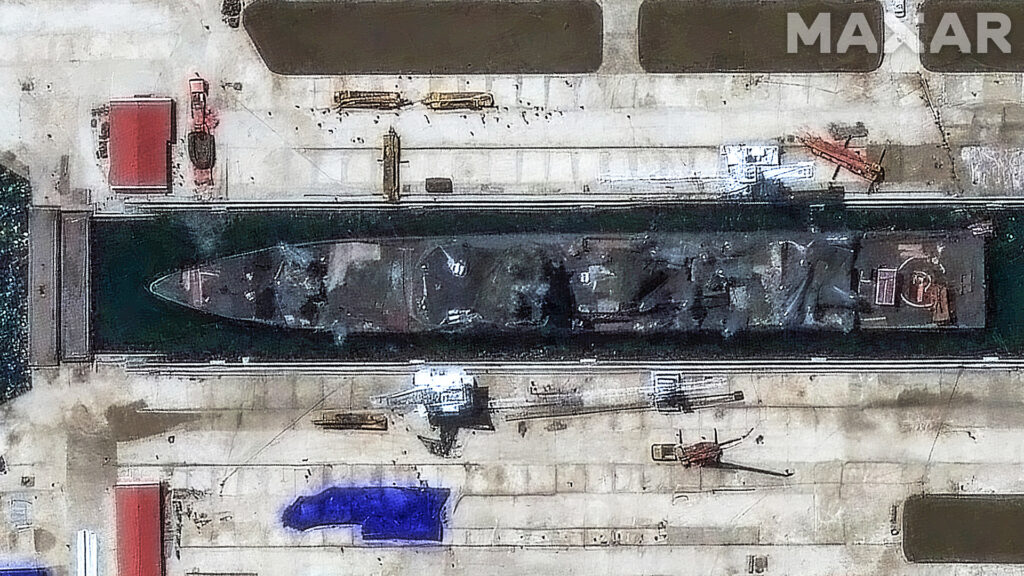
RAJIN, NORTH KOREA – The North Korean Choi-Hyun class frigate, which dramatically rolled over during a launch ceremony in May, has reappeared in a dry dock, revealing significant structural damage. New satellite images provide a clearer view of the mangled superstructure, highlighting the challenges ahead for North Korea’s naval repair efforts.
Breaking: Frigate’s Condition and Recovery Efforts
The frigate, the second of its class, was involved in a botched launch attended by Kim Jong Un on May 21. It has now been moved to a dry dock facility in Rajin, near the Russian border. The vessel was towed approximately 50 miles from Chongjin, where it was initially launched, and was successfully refloated and turned upright by June 3.
Immediate Impact of the Incident
According to satellite images provided by Maxar Technologies, the frigate shows extensive damage to its superstructure, with bent metal and lines clearly visible. This damage, compounded by seawater flooding, poses significant challenges to restoring the vessel to its former state.
Key Statistics:
- The frigate rolled over on May 21, 2025.
- Refloating and upright positioning completed by June 3, 2025.
- Located in Rajin, near the Russia-North Korea border.
Key Details Emerge
According to a report from North Korea’s KCNA on May 23, a detailed inspection revealed no holes in the hull, although the starboard side was scratched, and seawater had entered the stern section. Experts estimate that it took two to three days to balance the warship by pumping out seawater and 10 days to restore the ship’s side.
“Detailed underwater and internal inspection of the warship confirmed that, unlike the initial announcement, there were no holes made at the warship’s bottom, the hull starboard was scratched, and a certain amount of seawater flowed into the stern section through the rescue channel.” – KCNA Report, May 23
Industry Response and Speculation
North Korea’s efforts to repair the frigate are under scrutiny, with speculation about possible assistance from China or Russia. The ship’s proximity to the Russian border and its location in an economic zone dominated by trade suggests potential foreign involvement.
The timing is particularly significant as North Korea seeks to bolster its naval capabilities amidst ongoing international tensions. The regime’s commitment to restoring the ship by the end of June, despite the apparent impossibility, underscores its focus on maintaining a strong image.
What Comes Next
While the frigate’s structural damage is evident, the full extent of internal damage remains unknown. The repair process will likely be extensive, particularly given the limited facilities in Rajin. North Korea’s ability to ‘right the ship’ after this public setback will be closely watched by international observers.
As the situation develops, experts will continue to assess the implications of North Korea’s naval capabilities and potential foreign involvement in the repair efforts. The incident highlights the challenges faced by the regime in maintaining its military assets and the strategic importance of its naval forces.
For further inquiries, contact Tyler at [email protected].






